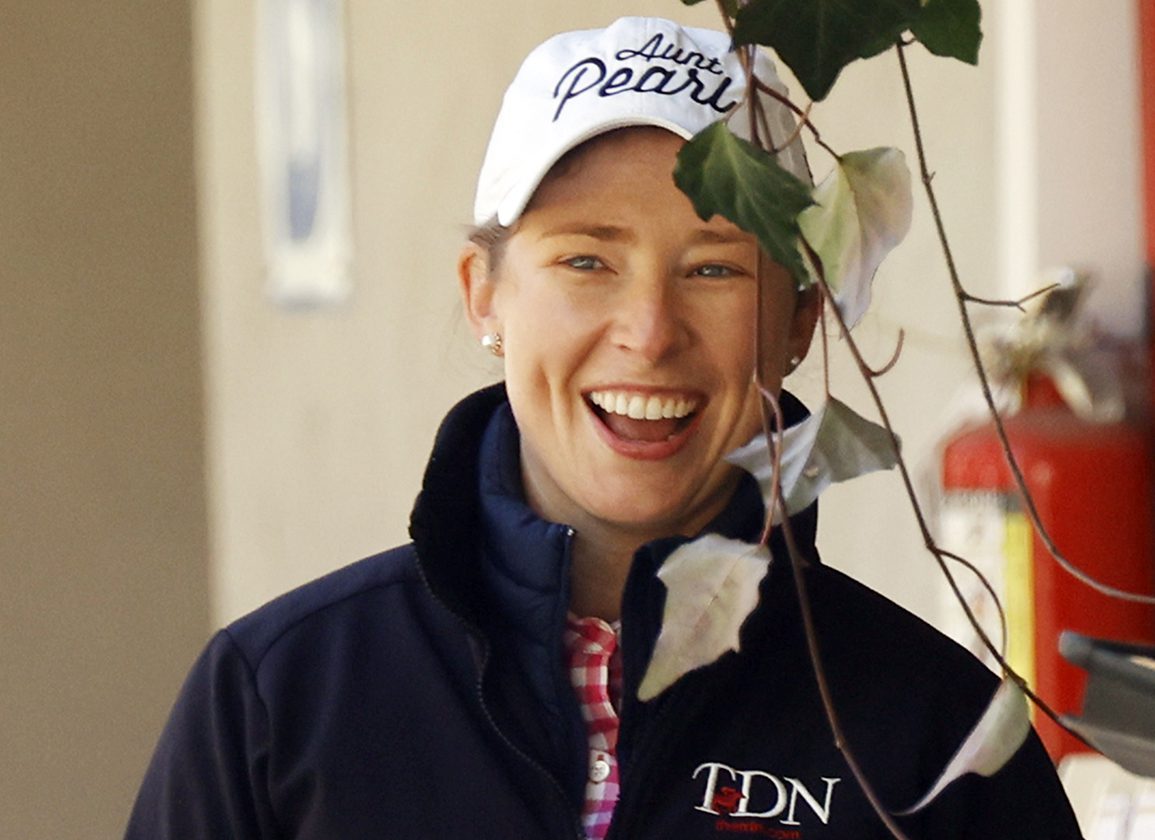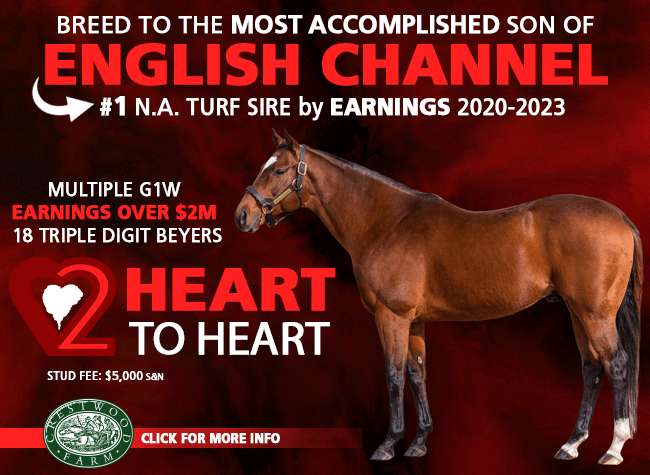By Jessica Martini
The TDN sat down with bloodstock agent Liz Crow for this fourth offering in a series presented in cooperation with the Consignors and Breeders Association (CBA). Through conversations with buyers and sellers, the series looks to contribute to the discussion on radiograph findings and their impact on racetrack success.
Bloodstock agent Liz Crow, who has an ever-expanding list of accomplished sales purchases, as well as a burgeoning book of pinhook successes with partner Paul Sharp, admits there are subtle distinctions between buying to race versus buying for resale.
“There are several different findings for a horse that you can live with to race, but you can't buy to pinhook,” Crow said. “Some of those things, for example, are the moderate to severe sesamoiditis and juvenile tendonitis. Those horses will be perfectly fine and perfectly normal if you give them time, but you can't put them right into a 2-year-old sales cycle because you can't give them that time. They have to get ready and start breezing. Moderate to severe sesamoiditis requires 60 to 90 days before you break them. Obviously, you just don't have 60 to 90 days [for a pinhook prospect]. You've got to start breaking them when they get to your farm and they need to be breezing by January. And that just doesn't give you enough time. So it's all about timing.”
Whether it's searching for a racing prospect or a potential pinhook, Crow said the biggest part of her job may be determining what is consequential and what isn't on the vet report.
“I think your relationship with your vet is very important,” she said. “Not trusting just the vet report or what the vet reports say, but actually forming a relationship with the vet and having that line of communication where you can have a discussion. You as the agent, and with your client, you have to take that information and make that decision based on what you're given.”
Crow has been shopping the sales for over a decade and has learned to value just that type of relationship she has developed with Dr. Jeff Berk.
“I've been doing this for quite a while now and I've used the same vet my entire career,” Crow said. “I have listened to Dr. Berk read vet reports to me and talk to me about this for 12+ years at this point. We vet 400-500 horses in September alone. Oftentimes, Jeff will say to me in September–we are obviously all moving so fast–he will say, 'Call me on this one, let's talk about it.' And that means this is not a black-and-white thing. I honestly think it's a toss-up for what's more important for my job, whether it's picking out and finding a horse that has talent or is it really deciphering these vet reports.”
She continued, “Vet reports to me are very subjective. They are not black and white. If you get three different vets that give you three different opinions–and that happens more often than not–they are giving you their opinion. They cannot tell you if this horse can or cannot make the races. They are using their experience to tell you what they think based on what they found in the X-rays. But these are not facts. So the most important thing for me, as an agent, is to decipher what that means and if it fits for what my client is trying to do with that horse.”
Crow has built a career on finding horses on a budget who go on to do great things on the racetrack. She purchased future champion Monomoy Girl for $100,000 at the 2016 Keeneland September sale and was able to acquire subsequent Grade I winner Jack Christopher for $135,000 at the 2020 Fasig-Tipton October sale.
“Sometimes the best thing you can do for your client is find that horse that doesn't vet perfectly, but may be very athletic,” Crow said. “I've had a lot of success doing that and I think it's a great way to approach it, as long as your client is clear and understands the risk.”
After purchasing Monomoy Girl in 2016, the filly went on to win the 2018 GI Kentucky Oaks and twice won the GI Breeders' Cup Distaff. The two-time Eclipse champion provided Crow a case-in-point.
“Monomoy Girl had moderate sesamoiditis behind in both hind ankles and she had an OCD removed behind as well,” Crow said. “Dr. Berk and I had a discussion about it and I was completely comfortable with bidding on her based on what he had told me. And I think it did bother a few people, from my understanding. But that's the thing, when you get three or four different vets, they all have different opinions. I think that's part of the problem, all of the opinions.”
Over the years, Crow has developed an understanding of what are significant issues and what issues she can deal with.
“If your vet says the horse has this, this, this and this, I sort of go through it and immediately think, a P1 plantar fragment behind, a lucency in the upper joint, mild sharpening in the upper joint of the right knee, those things are all fine. I know those three findings. Like a sharpening in the knee, any finding in the upper joint of the knee, mild to moderate sesamoiditis that scans well, a fragment in the back of the ankle, these things don't mean anything really. They are just comments, a differentiation of normal. I think that there are a lot of findings that are just that, a differentiation of normal. And deciphering what is acceptable and what isn't is not as easy as just looking at the vet sheet. Monomoy Girl is a great example of a horse that, if you read her vet sheet without any sort of context or discussion, you could think she could have problem, but she didn't and none of those things bothered her throughout her entire race career.”
Advancements in veterinary scans provide potential buyers with a treasure trove of information to work through. That's not a bad thing, according to Crow.
“You can never go wrong with more information,” she said. “I am not going to say it's a bad thing that we have better information. I am just going to say that every horse has something and it's very rare that you vet a horse that is perfectly clean. You have to learn what you can live with. Most good horses have something. It would be great to continue to inform these buyers that horses don't have to be NSA [no significant abnormalities] to be able to be purchased.”
Click to read previous The X-Ray Files: with Tom McCrocklin, David Ingordo or Ciaran Dunne.
Not a subscriber? Click here to sign up for the daily PDF or alerts.






